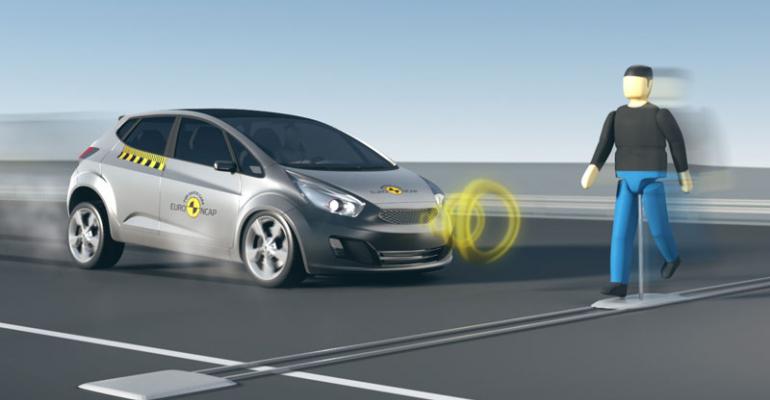Euro NCAP marks its 20th anniversary by launching its Road Map 2025, setting out for the first time the safety program’s priorities for the mobility and technological revolution the auto industry is beginning to experience.
It aims to offer clarity and confidence to motorists, highlighting new automated driving technologies and raising awareness of their benefits while helping ensure their safety potential is fully realized.
Under the program, Euro NCAP will challenge automakers to offer the best possible technology as standard in all segments and countries, protecting not only car occupants but also taking into account the safety of other more vulnerable road users.
NCAP says secondary safety will remain at the heart of its consumer ratings for some time, but it recognizes primary safety will have an increasingly important role to play, and for the first time, tertiary safety is addressed.
“Our strategy going forward will be to emphasize the integration of primary, secondary and tertiary safety features as enablers of a more holistic, safe system approach, in pursuit of Vision Zero,” Euro NCAP President Pierre Castaing says in a statement.
The Road Map outlines a timeline for the introduction of key protocol enhancements, including:
- Primary safety: Driver monitoring (2020), automatic emergency steering (2020, 2022), autonomous emergency braking (2020, 2022), vehicle-to-vehicle data exchange and vehicle-to-infrastructure (2024).
- Secondary safety: Whiplash/rear-end crash protection (2020), pedestrian and cyclist safety (2022).
- Tertiary Safety: Rescue, extrication and safety (2020), child presence detection (2022).
In the case of autonomous emergency braking, Euro NCAP said in 2012 it would not award a car its top safety rating of five stars if it lacked the feature. The agency at the time said AEB was unavailable on 79% of cars on sale in Europe.
Castaing says consumers now see safety as a key aspect of their purchasing decision.
“Many predict that the car and our personal mobility will change more in the next 10 years than it has in the last 100,” he says.
“Going forward, one of Euro NCAP’s vital roles will be to offer clear, impartial guidance on these emerging and increasingly automated technologies, while also raising awareness of their significant life-saving benefits.”
NCAP Secretary General Michiel van Ratingen says the potential safety benefits of automated driving are huge.
“If we can eliminate human error, we should see road casualty numbers tumbling and many lives being saved, but there is a lot of misunderstanding, over-expectation and perhaps some suspicion, of a world in which cars can drive themselves,” he says.
“Our role will be to provide clear information to consumers about the degree of automation in a car and how safely that automation has been implemented. Quite a challenge, but essential.”





